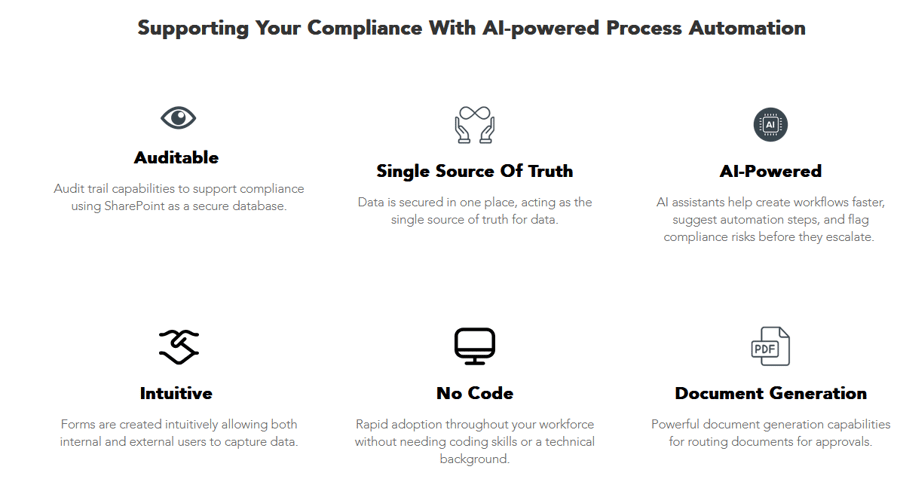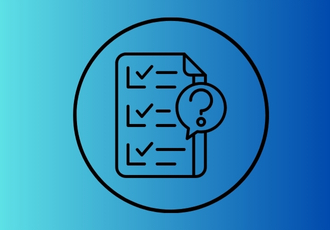Automation in education isn't about efficiency for its own sake—it's about freeing up mental, emotional, and temporal space for transformative learning.
When educators are buried in administrative tasks and data entry, they lose focus on what matters: inspiring curiosity and meeting students’ needs. This is where automation acts as a cognitive liberator, enabling educators and students to engage in more effective learning experiences.
This blog explores what educational automation is, its key benefits, and practical use cases that boost productivity and learning outcomes.
What is Automation in Education?
Automation in education refers to the use of technologies such as AI, robotics, and RPA to simplify and streamline tasks in schools and universities.
It covers everything from automating routine administrative work, such as attendance and records, to enhancing learning through personalized content and adaptive learning systems.
The goal is to improve operational efficiency, minimize manual workload, and allocate more time for meaningful teaching and learning.
5 Key Benefits of Automation in Education
The global business process automation market is projected to reach $19.6 billion by 2026, driven by the push for efficiency, system automation, and streamlined communication across industries. Education, too, stands to gain from these benefits.
Here’s how automation offers a practical solution by streamlining manual, repetitive processes.
1. Reduce teacher burnout
A Gallup poll found that 52% of K-12 teachers are experiencing burnout (the highest among all professions surveyed).
 Burnout gap between K-12 and all other industries
Burnout gap between K-12 and all other industries
With over half of K-12 educators reporting burnout, workflow automation offers relief. It streamlines workflows such as attendance, grading, and reporting by digitizing and simplifying processes, thereby significantly reducing paperwork and errors.
This efficiency gain frees up valuable time, enabling teachers to dedicate more focus to creating effective learning programs and student engagement, ultimately enhancing overall productivity.
Also read: 7 workflow automation examples to drive digital transformation
2. Improve collaboration and communication
Clear communication is vital in education, but it’s often disrupted by scattered messages and slow approvals.
Automation brings structure to this process by centralizing communication, routing student feedback, and notifying the relevant parties at the appropriate time.
3. Personalize the learning experience for students
Every student learns differently, and automation helps educational institutions respond to that.
Whether it’s adjusting lesson difficulty or recommending extra help, automation supports more targeted and responsive learning. For instance, educators can implement faster feedback loops and set up early alerts to intervene before problems escalate.
4. Cost savings
Administrative costs can lead to added overhauls on education budgets. According to a Gartner study, print-related expenses can consume up to 3% of an organization’s revenue.
Automation helps cut these costs by promoting a paperless culture. It digitizes forms, reports, and automates workflows, reducing paper use, printer maintenance, and manual processing.
Beyond printing, automating routine admin tasks frees up staff time for more meaningful work, resulting in long-term savings and better resource allocation.
5. Data-driven decision-making
Automation enables real-time data collection and analysis across academic performance, attendance, and engagement.
With centralized dashboards, custom workflows, and automated reports, schools can identify trends, measure program effectiveness, and make informed decisions faster. This leads to more intelligent resource allocation, early identification of at-risk students, and more responsive policy or curriculum adjustments, strengthening both academic outcomes and institutional agility.
Learn how Morley College London has enhanced its reporting by introducing FlowForma Process Automation.
How to Use Automation? Key Processes That Can Be Automated in the Educational Sector

Key processes that can be automated
By implementing automation in the following core processes, educational institutions can drive more efficiency and boost productivity for teachers, staff and students alike:
Examples of automation in education for the staff
Here are a few administrative and financial processes that can be automated using tools such as FlowForma:
1. Back office tasks
Academic administrators juggle countless tasks to keep schools running smoothly, from creating class schedules and maintaining student records to issuing report cards and generating student attendance reports. Many of these activities are paper-based, time-intensive, and repetitive—making them an ideal fit for automation.
Take the case of the College of Paramedics of Nova Scotia (CPNS). The college automated its registration process after facing misaligned data collection and sluggish renewal processes.
Besides, a secure self-service portal and intelligent forms streamlined applications and renewals, which significantly improved reporting.
 Review from CPNS
Review from CPNS
2. Budget management and financial reporting
Automating financial reporting and budget planning can ensure accurate allocation of funds.
Tools like FlowForma customize reporting processes, centralize financial aid forms and data, and automate tedious tasks such as renewals and expense reporting. In addition, it provides real-time insights into budgetary allocations.
Abingdon & Witney College replaced its tedious Excel-based expense tracker with an automated digital workflow. With a consolidated view of all claims, the college saved 402 hours on expense claims.
Mark Lay, Finance Director at Abingdon & Witney College, enumerates the value of adopting FlowForma’s process automation in this YouTube video:
Mark Lay’s FlowForma testimonial
3. Accident and incident reporting
Automating accident and incident reporting ensures quick action and compliance for all campus incidents.
In the case of Abingdon and Witney College, accident and incident reporting, which once required a multi-day paper process, can now be completed in a single day via electronic submission.
Read the complete case study to understand how the college achieved process automation efficiency with FlowForma.
4. Audits and compliance tracking
Automating data collection and reporting ensures timely, accurate compliance. Every step is logged and traceable, so you're never scrambling for proof.
Tools like FlowForma offer comprehensive governance features, including audit trails, role-based access controls, and a dedicated compliance module. It supports alignment with standards such as the General Data Protection Regulation (GDPR) and ISO 27701, managing risks and maintaining compliance across automated systems and workflows.

A closer look at FlowForma’s compliance module
Also read: How compliance workflow automation improves efficiency and regulations
Examples of automation in education for educators and teachers
1. Form submissions and updates
No more chasing signatures or deciphering handwritten forms. Automating form submissions and updates means data is collected cleanly and instantly. You get real-time accuracy and a clear audit trail, simplifying every process step.
With a no-code tool, you can also create smart forms with conditional logic to guide users and collect correct data. You can further validate it in real-time to prevent incomplete submissions that would otherwise stall the process.

Create smart forms with FlowForma
2. Parent-teacher communications
According to the RAND organization’s study, parent communications consume 2.3 hours weekly of a teacher’s 53-hour workweek.
 Chart depicting teachers’ average weekly hours spent on teaching-related activities
Chart depicting teachers’ average weekly hours spent on teaching-related activities
Automating email conversations and 1:1 conversations can help save more time to focus on students. For example, teachers can use online forms to gather key information or request volunteers, with responses stored in a database for easy access.
3. Grading and assessment
Timely feedback drives student success, but manual grading often delays it. According to an EdWeek Research Center study, teachers spend about five hours per week on grading and feedback.
Automated tools can reduce time spent on these tasks by auto-scoring objective assignments, managing submission collection, and even delivering pre-set feedback. This allows teachers to return grades more quickly and focus on providing personalized comments, giving students quicker insights to improve.
4. Student excursions
Automating student excursions simplifies planning, approvals, and risk assessments, ensuring safer, more compliant, and smoother trips.
For example, Abingdon & Witney College’s complex ‘Trips and Visits’ approval process, once plagued by lost paperwork and week-long delays across campuses, now starts and finishes on the same day.
Examples of automation in education for students
1. Onboarding and course registrations
Onboarding and enrollment processes often entail hectic paperwork and voluminous forms. Automating it frees up admin time, makes the process faster and efficient with reduced errors.
With AI Copilot, creating onboarding processes becomes easier, with just a few clicks. The following interactive demo illustrates how you can dynamically define conditions according to your requirements, saving staff and students time.
2. 24/7 student support
Automating communication between schools, students, and parents can ensure that support is available at any time, even outside school hours.
Institutions can provide instant answers to common questions about assignments, schedules, or school policies, send reminders about deadlines or upcoming events, and notify parents of absences or grade updates.
|
💡Process automation is imperative today, and early adoption is key. Download the 2025 guide for a strategic plan to advance your automation and learn how to gain a first-mover advantage. |
How FlowForma Empowers Automation in Education
Education is evolving fast. So is the urgency to achieve digital transformation.
With 5x faster deployment, here’s how FlowForma is seamlessly emulating digital transformation, helping institutions automate with speed, ease, and impact.
1. No-code platform for faster deployment
FlowForma’s no-code platform empowers non-technical users to build and launch automation workflows independently. You do not require extensive IT support to work with or deploy the tool.
Watch this YouTube video to see FlowForma’s no-code process automation tool at work:
Caption: FlowForma’s no-code approach
Alt-text: YouTube video showcasing FlowForma’s process automation at work
Its intuitive interface enables rapid setup, reduces dependency on specialist developers, and puts digital tools directly into the hands of operational staff.
2. Cost-effective path to digital transformation
By digitizing key processes, users can directly reduce operational expenses, including printing and paper costs, as well as storage and manual labor.
ROI of FlowForma’s implementation
Moreover, it enables a cost-effective path to digital transformation with clear, process-based, and transparent pricing starting from £2,067 per month. No hidden fees or extra costs.
Try it free for the next seven days—no credit card details required!
3. Integrates seamlessly with existing systems
You don’t need to rip and replace legacy systems. FlowForma integrates smoothly with existing systems, allowing for a phased approach to automation over time.
This reduces disruption and makes digital transformation achievable, even for institutions with limited technical capacity.
4. AI-powered innovation
FlowForma’s prompt-driven, advanced Agentic AI integrates into any workflow step, delivering real-time, context-aware answers. It's modular, fast to deploy, and empowers users to get instant value.

FlowForma's Agentic AI
In addition, FlowForma’s AI Copilot allows you to build and automate processes in real-time. No more manually defining—just say what you want, and the AI Copilot will handle the structure instantly.
Admission-related query? Route it to the admission department.
Expense reports piling up? Set sequential reminders for unapproved expense reports. Try it now for Free!
Tasks are routed instantly, reminders are sent automatically, and no one’s left chasing emails. Plus, you can digitize processes 5X faster, which is especially important during peak admissions periods or staffing shortages.
5. One-click document generation
Say goodbye to endless paper trails, typing (or retyping) humongous paragraphs, or shuffling four different tabs to create approval forms and letters.
Generate documents automatically with the click of a button using FlowForma. Every output is consistent, branded, and audit-ready—be it admission forms, financial aid letters, or onboarding packs for staff or students
6. Supports governance across complex stakeholders
With FlowForma, institutions can maintain compliance and governance standards by using automated workflows that ensure documentation is complete, tasks are assigned, and deadlines are met.
Pioneer Automation in Education With FlowForma
Adopting automation in education needn’t be costly, complex, or disruptive. FlowForma offers a smarter path forward, modernizing processes without huge investments or complicated IT overhauls. Easily automate tasks, build custom workflows, and create paperless processes—all without writing a single code.
Discover how Abingdon & Witney College transformed their processes with FlowForma in this video.
FlowForma offers a smarter path forward, modernizing processes without huge investments or complicated IT overhauls. Easily automate tasks, build custom workflows, and create paperless processes—all without writing a single code.
Ready to pioneer automation in education with a leading, cost-effective solution? Book a personalized FlowForma demo today.
 By
By 




